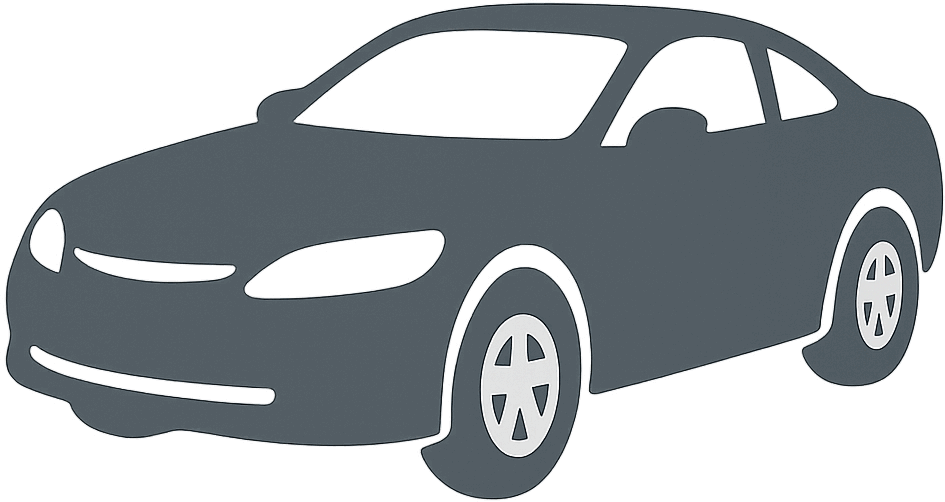 2005 TVR Sagaris Dimensions, Size & Specs
2005 TVR Sagaris Dimensions, Size & Specs
Measurements of the 2005 TVR Sagaris, engineered for optimal performance and comfort
| Dimensions | |
|---|---|
| Length: | 4035 mm158.9 in13.2 ft |
| Width: | 1895 mm74.6 in6.2 ft |
| Height: | 1135 mm44.7 in3.7 ft |
| Weight Specifications | |
| Curb Weight: | 1215 kg2679 lbs |
| Tire Specifications | |
| Tire Size: |
|
The TVR Sagaris, produced between 2004 and 2006, is a distinctive British sports coupe that combines aggressive styling with a lightweight yet robust build. Measuring 4035 mm (158.9 inches) in length, 1895 mm (74.6 inches) in width, and standing at a low height of 1135 mm (44.7 inches), the Sagaris boasts a compact and aerodynamic profile designed to maximize performance. Weighing in at just 1215 kg (2678 lbs), this coupe emphasizes agility and speed, making it a favourite among enthusiasts who appreciate lightweight sports cars. The vehicle rides on 18-inch tires sized at 225/35 R18, contributing to its excellent road grip and handling. The Sagaris's unique dimensions and low curb weight enhance its nimble driving dynamics, setting it apart from contemporary sports cars. As a rare model in TVR's lineup, the Sagaris merges striking design with precise engineering, offering a driving experience characterized by both raw power and remarkable control. Its compact size makes it suitable for spirited driving on both road and track, appealing to collectors and drivers seeking an exclusive coupe with impressive performance credentials.
Discover the standout features that make the 2005 TVR Sagaris a leader in its class
Have a question? Please check our knowledgebase first.
The TVR Sagaris, produced between 2004 and 2006, features a compact and aggressive sports car profile. It measures 4035 mm (158.9 inches) in length, 1895 mm (74.6 inches) in width, and stands 1135 mm (44.7 inches) tall. These dimensions contribute to its low, wide stance, optimizing aerodynamics and handling performance in a coupe configuration.
The curb weight of the TVR Sagaris is 1215 kg (2,679 lbs), which is relatively light for a high-performance sports car. This lightweight construction enhances agility, acceleration, and overall handling, allowing the car to respond swiftly to driver inputs. The low mass also benefits braking performance and cornering stability, contributing to the Sagaris' reputation as a driver-focused track-capable vehicle.
The TVR Sagaris has a width of 1895 mm (74.6 inches), which provides a broad footprint for improved road contact and stability during cornering at high speeds. It comes equipped with 225/35 R18 tires, which are wide and low-profile to maximize grip and handling precision on both road and track surfaces. These tires complement the car’s sporty setup and enhance its performance capabilities.
Standing at 1135 mm (44.7 inches) tall, the TVR Sagaris is quite low to the ground. This low height minimizes air resistance and lowers the center of gravity, which significantly improves aerodynamics and stability at high speeds. The car’s design focuses on efficient airflow management, helping the Sagaris to achieve excellent downforce and cornering performance.
Yes, the TVR Sagaris fits comfortably within a standard garage. A typical single-car garage space measures approximately 6 meters (20 feet) in length and 3 meters (10 feet) in width, which is more than sufficient for the Sagaris' length of 4035 mm (158.9 inches) and width of 1895 mm (74.6 inches). Additionally, its low height of 1135 mm (44.7 inches) easily clears garage door openings, making it practical for everyday home storage.
Compared to previous TVR models like the TVR Cerbera, the Sagaris is slightly more compact in length but wider, enhancing stability. While the Cerbera measures about 4,380 mm in length (172.4 inches), the Sagaris is shorter at 4035 mm (158.9 inches). Its width of 1895 mm (74.6 inches) is broader than many predecessors, offering a more aggressive stance and improved road grip. These size variations reflect TVR’s evolution toward a more focused track-oriented sports car with improved handling characteristics.
Dimensionally, the TVR Sagaris is competitive among early-2000s sports coupes. Its length of 4035 mm (158.9 inches) is on the compact end compared to rivals like the Porsche 911 or Chevrolet Corvette, which are generally longer. However, its width at 1895 mm (74.6 inches) is relatively wide, providing a stable platform for dynamic driving. The Sagaris’ lightweight and low height (1135 mm/44.7 inches) emphasize agility and aerodynamic efficiency, making it stand out in the sports coupe segment for track performance rather than outright size.
The TVR Sagaris comes with 225/35 R18 tires, meaning it has 18-inch diameter wheels, with tires 225 mm wide and a low aspect ratio of 35%. This wide, low-profile tire size allows for excellent grip on tarmac by maximizing the contact patch and reducing sidewall flex. This translates into sharper handling, better cornering stability, and improved responsiveness, critical for a high-performance track-focused vehicle like the Sagaris.
The TVR Sagaris, with its lightweight 1215 kg (2,679 lbs) curb weight, compact size (4035 mm length), and wide track, is very much designed for track driving. Its dimensions and weight optimize agility and aerodynamic performance, making it nimble and responsive around corners. Although it can be driven on public roads, its setup—including stiff suspension and focused ergonomics—is more suited for enthusiasts seeking a thrilling driving experience rather than everyday comfort or practicality.
The low height of 1135 mm (44.7 inches) gives the TVR Sagaris an aerodynamic edge but does mean the cabin sits close to the ground. This can slightly restrict outward visibility compared to taller vehicles, especially in urban traffic. Entry and exit may require a bit more effort or cautious movement due to the low seating position, which is common in sports cars designed for performance. However, this design is intentional to lower the center of gravity and improve driving dynamics.
